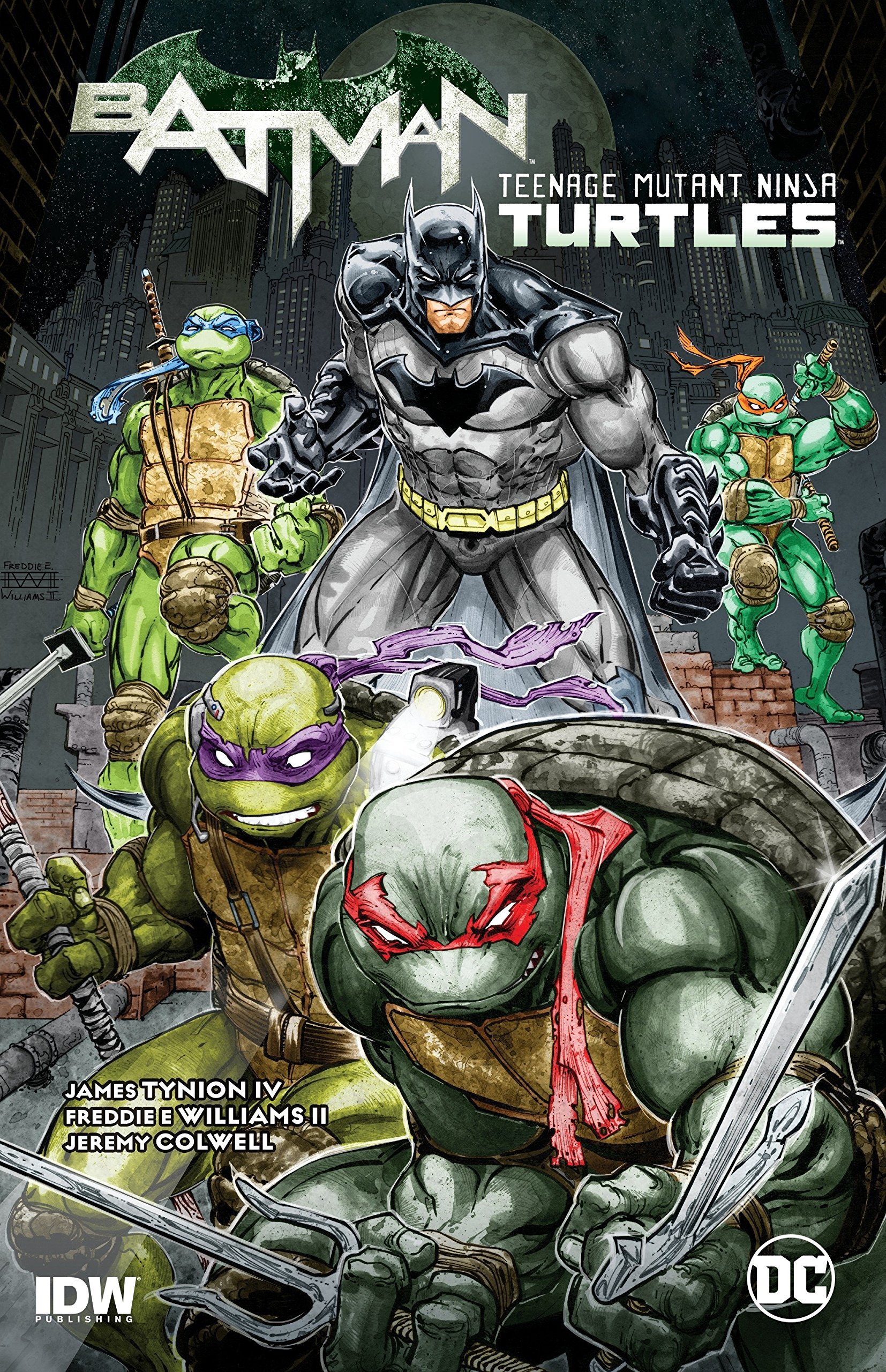The Man Without Fear...By The Year: 1971
By Bruno Savill De Jong — It’s 1971. The Microprocessor is invented, bombings by the IRA escalate, and the Pentagon Papers are leaked to the press, showing the US government has systematically lied about its involvement in Vietnam. People are listening to “American Pie,” watching The French Connection, and reading Daredevil.
Written by Gerry Conway (72-78, 80-84), Gary Friedrich (79)
Illustrated by Gene Colan (72-82, 84), Alan Weiss & Barry Windsor-Smith (83)
Inks by Syd Shores (72-75, 84), Tom Palmer (76-80), Jack Abel (81-82), Bill Everett (83)
Colors unknown/unlisted
Lettered by Artie Simek (72, 76, 83), Sam Rosen (73-75, 78, 80), Jean Izzo (77, 79), Jon Costa (81-82)
Daredevil has slowly been inching towards the Bronze Age, incorporating more dynamic action and (relatively) relevant topics. 1971, therefore, is a radical shift in the opposite direction. After several issues dedicated to “political extremists” at the tail-end of 1970, 1971 whiplashes into standalone Silver Age shenanigans reminiscent of Daredevil’s early days. 1971 begins with the young new writer of Gerry Conway – Daredevil being his break into Marvel superheroes – and he introduces bizarre forgotten foes like Tagak the Leopard Lord (an interdimensional warrior who ‘sees’ through the eyes of his pet leopard Opar), gang members called Crackers and Shorts in The Committee (who poison the reservoir to turn New York blind), and a thug who gets mutated into the Man-Bull.
The year also features two stores where Daredevil encounters a cosmic force with another Marvel hero, like the extra-dimensional Zodiac Cartel with Iron Man, or when an alien “teardrop” summons Daredevil, Spider-Man and Namor to Central Park - despite Daredevil introducing this, the other two continue the adventure in their books, leaving Matt behind on Earth. Conway will frequently begin issues in media res, throwing readers into unfamiliar scenarios before quickly explaining them via captions (i.e., Daredevil being in South America to fight the revolutionary legend El Condor). It increases the unpredictable intrigue of these issues, but also further disconnects them from reality.
Yet, contiguous with such kooky stories are intense emotional inner-monologues from Matt. Daredevil is no stranger to angst, but Conway drills down on Matt’s doubts and internal conflicts, repeatedly emphasising to himself “you’ve alienated just about everyone who’s ever tried to help you” and how he’s only Daredevil to escape his failed civilian life. Third-person narration muses over Matt “he can never know if he’s been right in making the choices he has” and questions “do you fight… out of altruism? Or… because of some less noble reason?”. Spider-Man once thinks “you don’t see Daredevil beating his breast in emotion-torn agony,” comparing his own issues with the death of Captain Stacy, a precursor to the landmark death of Gwen Stacy a couple years later, which was also penned by Gerry Conway. But Daredevil merely keeps such “agony” inside, explicitly contrasting his jovial swashbuckling persona against this inner angst; “the quips come fastest when you’re crying inside, don’t they, DD?”
Much of this, as usual, revolves around Karen Page. Matt’s been unable to get over Karen, made more difficult by her meteoric rise into a movie-star. Daredevil feels his failure to settle down with Karen reveals his inability to be “normal,” which, in a self-destructive cycle, only pushes him to embrace Daredevil more. Karen is likewise shown doubting herself, thinking that her newfound fame, “without Matt – it’s wasted all of it – nothing.” Karen even tries to reach Matt while in New York, although fate seemingly keeps them apart. Indeed, Karen and Matt have no contact in 1971, with Karen falling in love with her reliable agent, Phil, instead.
Karen does meet Foggy while in New York, although a full Nelson & Murdock reunion never materializes. Foggy has his own problems, as while being fast-tracked to become New York’s Governor, he’s being heavily blackmailed (what for is not made clear) by the overarching threat “Mr Klein.” It’s Klein who hires the Owl – 1971’s only returning foe – to attack the city, it’s Klein who has henchmen kidnap and experiment on civilians. Although, in an extension of the Silver Age tone pervading 1971* Klein is revealed to be the android MK-9, or “The Assassin,” sent from the future to divert the course of history for his master computer program, “Baal.”
Nevertheless, Klein’s sporadic attacks on New York make Daredevil “engage” with the current times, albeit in less overt ways than Roy Thomas referencing the Chicago Riots. Instead, we see New York’s citizens frequently “team up” with Daredevil, from the “hippie bum” who helps Matt cross the street, the group of blind people defeating the Committee, those in Greenwich Village targeted by the Owl, or the “hippie” tourists who are targeted for Klein’s experiments. Conway threads a vague sense of community over these people. Daredevil soliloquizes over the latter, “there they go… the love generation! Just hope they meet up with more loveable types from now on!”
Klein also introduces the Black Widow into Daredevil’s life. Daredevil nearly drowns after fighting the Owl’s helicopter, and it’s Natasha Romanov who rescues him. This life-saving act binds the two together, especially since Daredevil’s final thoughts were of Karen, making Black Widow literally “rescue” him from such fatalistic single-minded obsessions. Earlier, Matt had considered “all this adolescent mooning – isn’t it just a way to punish myself?”, considering that his fixation on Karen was a way of stifling his own happiness. So, perhaps Black Widow represents a fresh start, as somebody with her own complications but who meets Matt as Daredevil first, and on equal footing.
Black Widow is depicted as more openly “sexy” than Karen, with a flirtatious fight-style and frequent Male Gaze heavy scenes of half-naked undressing. Although, Natasha is also reticent about getting close to Daredevil, believing herself to have a “curse” where she kills those she loves. This concern does reveal the feelings for Daredevil already burgeoning. Natasha also meets Matt Murdock when, after she and Daredevil battle the Scorpion he is killed (later revealed to be an android of Klein’s), and she is arrested for it. Daredevil #83 – with guest art by Barry Windsor-Smith and Alan Weiss as “Gene Colan’s on vacation” – puts Natasha on trial, with Foggy blackmailed into prosecuting her and Matt on her defense. Black Widow is adamant she won’t be fairly judged given her criminal history and Russian heritage, and even after it’s declared a mistrial, Natasha leaves America given the shame of the experience, telling Matt she may see him again “perhaps in a month… or a year.”
Turns out it’s the former, as Daredevil #84 has Matt reunite with Black Widow and wrap up the Klein arc. Interestingly, it’s Matt that Natasha can’t stop thinking about, and whom she invites to join her in Switzerland. Klein has also moved his operation here, supposedly to ensnare Matt, even if it backfires and has Daredevil destroy his lab. Frankly the Klein storyline is confusing, and wrapped up very quickly, with him even finished off by the time-traveling “future sons of man” instead of Daredevil himself. But it does result in Matt and Natasha ending up together. There is some indication that this was orchestrated by Klein, given how passionately they fall for each other, to where Matt even tells Natasha he’s Daredevil. But as with most of Conway’s 1971 work, the goofy scenarios shouldn’t be investigated too closely for how/why they happened, but accept as part of the strange circuitous course of history.
*Daredevil #83-84 were released in 1972, but since they conclude the “Klein story-arc,” it felt more appropriate to include them here than in the next piece in this ongoing series, which will be up on the site later this very week!
Check out past installments from The Man Without Fear…By The Year!
Check out Bruno Savill De Jong’s last regular series, Gotham Central Case by Case!
Bruno Savill De Jong is a recent undergraduate of English and freelance writer on films and comics, living in London. His infrequent comics-blog is Panels are Windows and semi-frequent Twitter is BrunoSavillDeJo.












